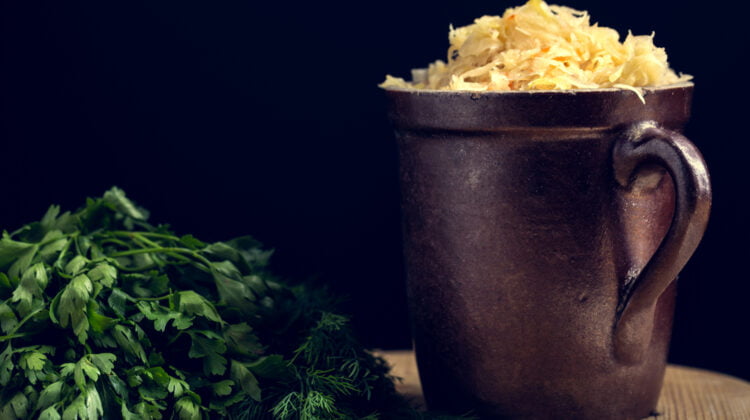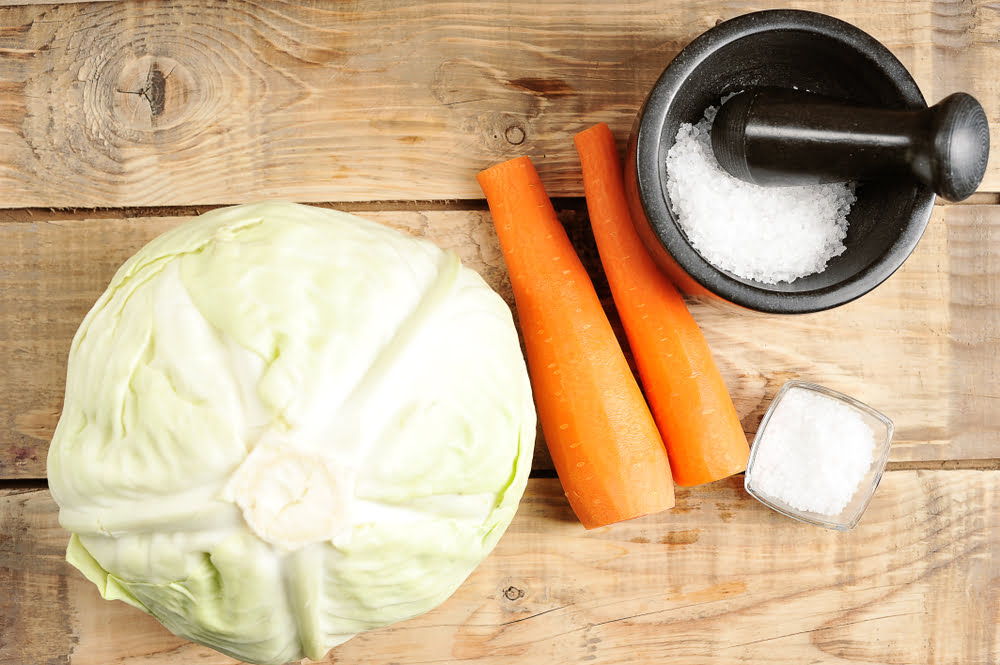
Sauerkraut made at home is a fun way to add fermented foods to your diet. The dish originated in Eastern Europe and Germany, where people fermented shredded cabbage mixed with salt and other ingredients to create this dish. Sauerkraut is rich in probiotics, vitamins, and minerals that improve digestion and boost the immune system.
Preparing sauerkraut for winter has always been a tradition at my home. Over the years, we created our own recipes that add a twist to this simple dish. In this blog post, I will explain the basic process of making sauerkraut: I will describe the main ingredients, necessary equipment, preparation steps, and fermentation. This guide is meant to give you the basic knowledge to get you started on your homemade sauerkraut.

Takeaways
- Making sauerkraut at home is an easy way to produce fermented food.
- Essential ingredients and equipment are easy to come by: cabbage, salt, a knife, a cutting board, a large bowl, and a fermentation container.
- The preparation and the fermentation process are simple: shredding the cabbage, adding salt, massaging to release its juices, packing it tightly into a fermentation vessel, and leaving it at room temperature for several days to kick off fermentation.
- Anyone can do it!
Understanding Sauerkraut
Some Basic Facts

Sauerkraut is a traditional dish from Eastern Europe which has been prepared there for centuries. The name “sauerkraut” comes from German and literally means “sour cabbage,” which also happens to be an accurate description of the dish. Making sauerkraut involves fermenting shredded cabbage in a brine solution, a process that gives it a distinctive sour flavor.
Historically, sauerkraut was an important food source for sailors on long voyages, as it is rich in vitamin C and can be stored for months at a time. That’s why it was also a must on the menu for soldiers during World War I and II.
To learn more about sauerkraut’s epic journey through ages and continents, I invite you to watch the video below. The article continues under the video.
Health Perks
Sauerkraut is both delicious and incredibly healthy. It is a rich source of vitamins C and K, fiber, and other nutrients. In addition, fermentation produces beneficial bacteria known as probiotics, which help maintain a healthy gut microbiome. Click here to read more about the gut microbiome.
Some potential health benefits of sauerkraut:
- Improves digestion
- Boosts immune functions
- Reduces inflammation
- Lowers risk of certain diseases, such as cancer and heart disease

Keeping the benefits in mind, one should not lose sight of the potential negative effects of sauerkraut. For instance, it is high in sodium (salt). For those of us that are watching our sodium intake, it is best to consume sauerkraut in moderation. Also, due to its sour taste and raw ingredients, it may upset your stomach. As they say, moderation in all things is the most appropriate advice.
Making Sauerkraut
Key Ingredients
You only need a few ingredients to make this nutritious food:
- Cabbage is the main ingredient. You can use any type of cabbage, but green cabbage is the most commonly used and gives the best results.
- Salt is essential for fermentation. It also helps preserve the cabbage.
- Water is used to dissolve the salt, yet only if your cabbage is not juicy enough.

And voilà! These three ingredients are all you need.
However, you can also add other ingredients for a richer flavor, such as carrots, onions, garlic, red peppers, caraway seeds, juniper berries or even apples—just experiment to find out what you like.
Last but not least, for the best results, use fresh, high-quality cabbage and pure, non-iodized salt.
Equipment
Here’s what you’ll need to make sauerkraut:

- A cabbage shredder or a mandoline for shredding the cabbage. If you don’t have one, you can use a sharp knife. Yet, it will take longer, and the cabbage may not be as evenly shredded. You will need the knife to cut any other ingredients.
- A large bowl to mix the shredded cabbage with salt and other ingredients. Make sure the bowl is big enough to allow room for mixing.
- A fermentation container—You can use a crock, a glass jar, or a plastic container. It should be big enough to hold all of the cabbage, allow the brine to rise, and have a tight-fitting lid.
- A weight to keep the cabbage submerged in its own juices during fermentation. You can use a plate and a clean rock, or a fermentation weight.
- A sharp knife to cut the cabbage and any other ingredients you’re adding.
- A cutting board.
Step-by-step guide
To make sauerkraut in a crock, follow these steps:

- Shred the cabbage and mix it well with salt. For 6 pounds of cabbage, you will need 3 tablespoons of salt (or 1 tablespoon per 1 kilogram of cabbage)
- Pack the cabbage tightly into a crock, making sure it is submerged in its own juices. You may also pour brine to cover that cabbage.
- Put a big cabbage leaf and a weight on top of the cabbage.
- Cover the crock with a lid and let the cabbage ferment. The right temperature is between 18°C and 24° (or between 65° and 75°F).
- Check the cabbage every few days to make sure it is still submerged. Skim off any scum that forms on the surface.
- Taste the sauerkraut after a week to check if it is ready. If not, let it ferment for a few more days.
Want to learn more about making delicious sauerkraut? See our In-Depth Guide on Making Sauerkraut Like a Pro!

Leave a Reply